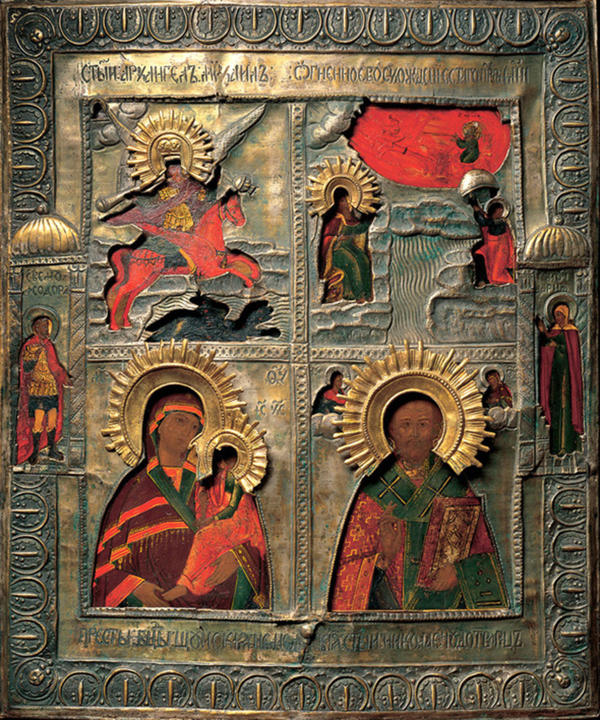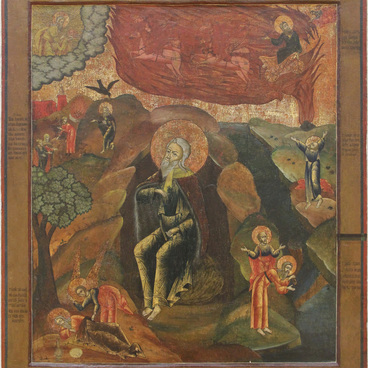Four-section icons appeared in Russia 5 centuries after the Christianization. They were most often used for home worship services and consisted of four holy pictures with different subjects. All of them were painted on one wood panel and could be combined on various principles.
For instance, the four-section icon The Motherhood was combined of four holy pictures of the Virgin Mary: the Virgin Mary Orant with a holy picture of the unborn Baby Jesus; the Virgin Mary Hodigitria with Baby Jesus in her left arm; the Virgin Mary of Tenderness (‘Glykophilousa’) with Baby Jesus cheek-to-cheek with his Mother; and the Virgin Mary of Nurture with Jesus the Youth. Those holy pictures symbolized all the stages of maternity: from the conception to the adolescence of the child. Four-section icons could also combine holy pictures of the saints and subjects of feasts that were particularly hallowed in a certain area.


